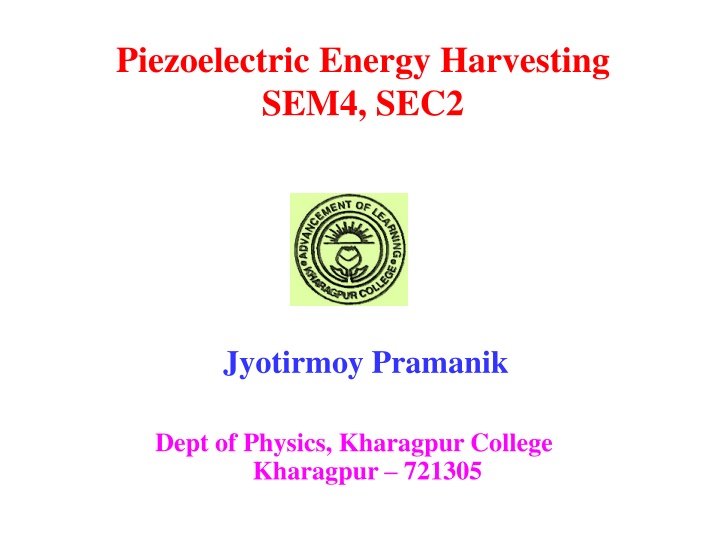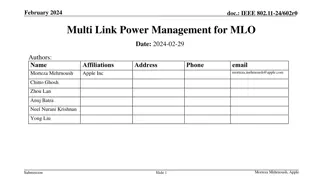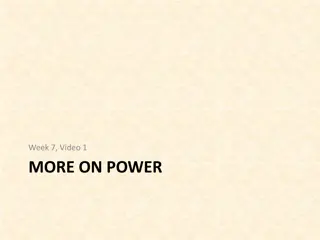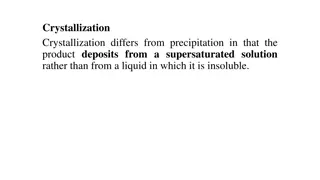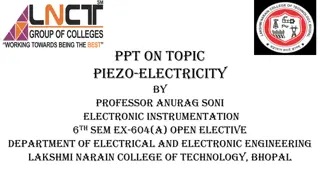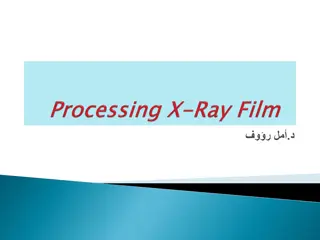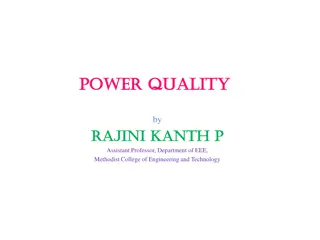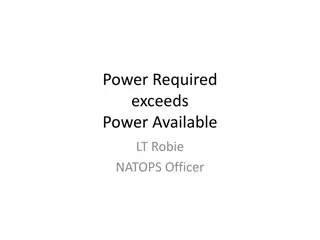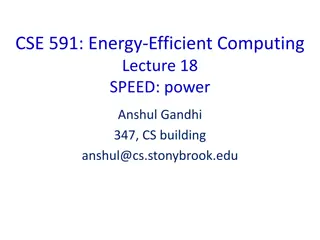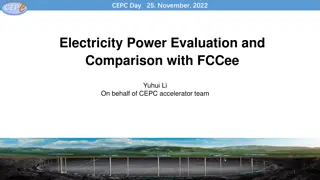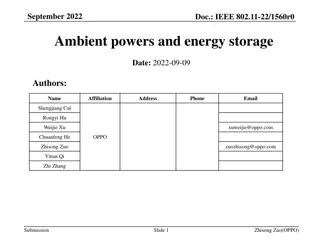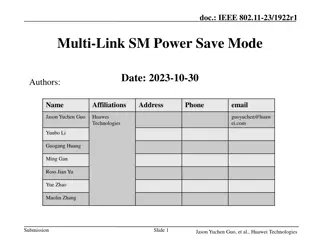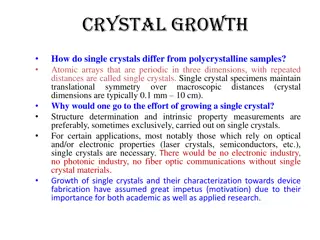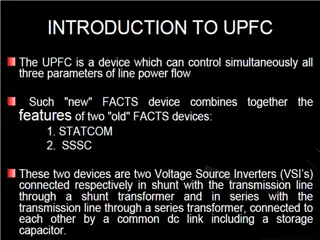Piezoelectricity: The Power of Crystals
Piezoelectricity, also known as the piezoelectric effect, is a fascinating phenomenon where certain materials can generate AC voltage when subjected to mechanical stress. This ability is harnessed in various applications such as ultrasonic devices and acoustic transducers. The essence of piezoelectricity lies in the unique structure of crystals and how they respond to external forces, demonstrating a remarkable interplay between mechanical and electrical properties.
Download Presentation

Please find below an Image/Link to download the presentation.
The content on the website is provided AS IS for your information and personal use only. It may not be sold, licensed, or shared on other websites without obtaining consent from the author.If you encounter any issues during the download, it is possible that the publisher has removed the file from their server.
You are allowed to download the files provided on this website for personal or commercial use, subject to the condition that they are used lawfully. All files are the property of their respective owners.
The content on the website is provided AS IS for your information and personal use only. It may not be sold, licensed, or shared on other websites without obtaining consent from the author.
E N D
Presentation Transcript
Piezoelectric Energy Harvesting SEM4, SEC2 Jyotirmoy Pramanik Dept of Physics, Kharagpur College Kharagpur 721305
Piezoelectricity Definition: Piezoelectricity, also called the piezoelectric effect, is the ability of certain materials to generate an AC (alternating current) voltage when subjected to mechanical stress or vibration, or to vibrate when subjected to an AC voltage, or both. The most common piezoelectric material is quartz. Certain ceramics, Rochelle salts, and various other solids also exhibit this effect. A piezoelectric transducer comprises a "crystal" sandwiched between two metal plates. When a sound wave strikes one or both of the plates, the plates vibrate. The crystal picks up this vibration, which it translates into a weak AC voltage.
Therefore, an AC voltage arises between the two metal plates, with a waveform similar to that of the sound waves. Conversely, if an AC signal is applied to the plates, it causes the crystal to vibrate in sync with the signal voltage. As a result, the metal plates vibrate also, producing an acoustic disturbance. https://en.wikipedia.org/wiki/File:SchemaPiezo.gif Piezoelectric transducers are common in ultrasonic applications, such as intrusion detectors and alarms. Piezoelectric devices are employed at AF (audio frequencies) as pickups, microphones, earphones, beepers, and buzzers.
What causes piezoelectricity ? In most crystals (such as metals), the unit cell (the basic repeating unit) is symmetrical; in piezoelectric crystals, it isn't. Normally, piezoelectric crystals are electrically neutral: the atoms inside them may not be symmetrically arranged, but their electrical charges are perfectly balanced: a positive charge in one place cancels out a negative charge nearby. However, if you squeeze or stretch a piezoelectric crystal, you deform the structure, pushing some of the atoms closer together or further apart, upsetting the balance of positive and negative, and causing net electrical charges to appear. This effect carries through the whole structure so net positive and negative charges appear on opposite, outer faces of the crystal.
What causes piezoelectricity ? The reverse-piezoelectric effect occurs in the opposite way. Put a voltage across a piezoelectric crystal and you're subjecting the atoms inside it to "electrical pressure." They have to move to rebalance themselves and that's what causes piezoelectric crystals to deform (slightly change shape) when you put a voltage across them.
How piezoelectricity works Here's a quick animation showing how piezoelectricity occurs. It's somewhat simplified, but it gives you the basic idea: https://cdn4.explainthatstuff.com/how-piezoelectricity-works.gif Normally, the charges in a piezoelectric crystal are exactly balanced, even if they're not symmetrically arranged. 1. The effects of the charges exactly cancel out, leaving no net charge on the crystal faces. (More specifically, the electric dipole moments vector lines separating opposite charges exactly cancel one another out.) 2. If you squeeze the crystal (massively exaggerated in this picture!), you force the charges out of balance. 3. Now the effects of the charges (their dipole moments) no longer cancel one another out and net positive and negative charges appear on opposite crystal faces. By squeezing the crystal, you've produced a voltage across its opposite faces and that's piezoelectricity.
Application of Piezoelectricity In ultrasound equipment, a piezoelectric transducer converts electrical energy into extremely rapid mechanical vibrations so fast, in fact, that it makes sounds, but ones too high-pitched for our ears to hear. These ultrasound vibrations can be used for scanning, cleaning, and all kinds of other things. In a microphone, we need to convert sound energy (waves of pressure traveling through the air) into electrical energy and that's something piezoelectric crystals can help us with. Simply stick the vibrating part of the microphone to a crystal and, as pressure waves from your voice arrive, they'll make the crystal move back and forth, generating corresponding electrical signals. The "needle" in a gramophone (sometimes called a record player) works in the opposite way. As the diamond-tipped needle rides along the spiral groove in your LP, it bumps up and down. These vibrations push and pull on a lightweight piezoelectric crystal, producing electrical signals that your stereo then converts back into audible sounds.
Application of Piezoelectricity In a quartz clock or watch, the reverse-piezoelectric effect is used to keep time very precisely. Electrical energy from a battery is fed into a crystal to make it oscillate thousands of times a second. The watch then uses an electronic circuit to turn that into slower, once-per-second beats that a tiny precision gears use to drive the second, minute, and hour hands around the clock-face. Piezoelectricity is also used, much more crudely, in spark lighters for gas stoves and barbecues. Press a lighter switch and you'll hear a clicking sound and see sparks appear. What you're doing, when you press the switch, is squeezing a piezoelectric crystal, generating a voltage, and making a spark fly across a small gap. motor and some
Piezoelectric Energy Harvesters The piezoelectric effect converts kinetic energy in the form of vibrations or shocks into electrical energy. Piezoelectric generators (energy harvesters) offer a robust and reliable solution by converting normally wasted vibration energy in the environment to usable electrical energy. They are ideal in applications that need to charge a battery, super capacitor, or directly power remote sensor systems.
Suggestions For any quarry, mail to jotir_moy@yahoo.com or contact through mobile.
